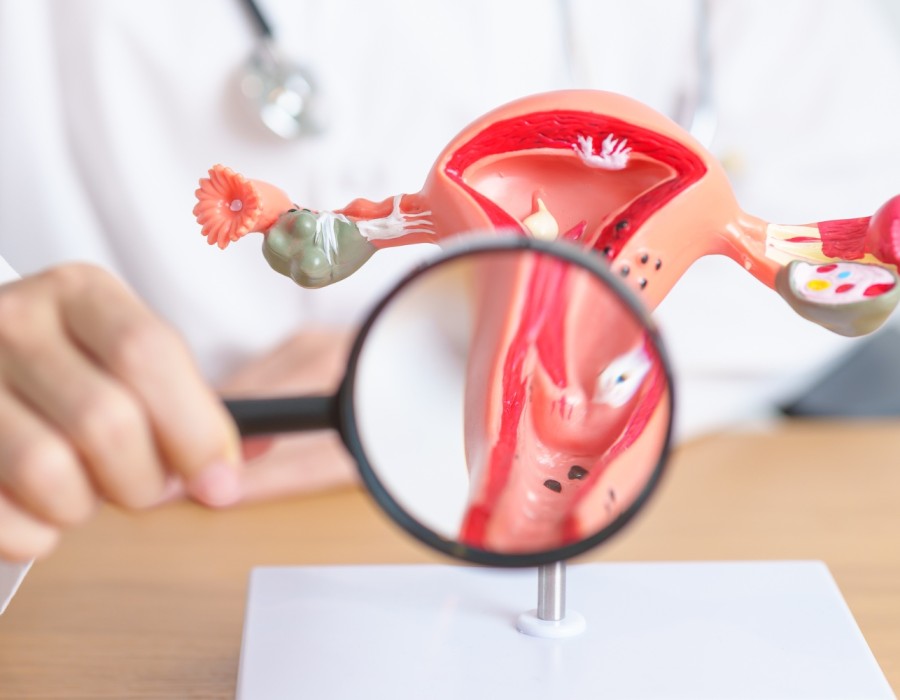Introduction:
Millions of women worldwide suffer with fibroids, which are non-cancerous growths that form in the uterus. While they are generally benign, fibroids can cause a range of symptoms, including heavy menstrual bleeding, pelvic pain, and reproductive issues. For many women, the journey from diagnosis to recovery can be challenging, but with the help of the best fibroid doctors, navigating this path becomes more manageable. In this comprehensive guide, we will explore the diagnosis, treatment options, and recovery process for fibroids, highlighting the crucial role that skilled physicians play in patient care.
Understanding Fibroids:
Before delving into the role of fibroid doctors, it's essential to understand what fibroids are and how they impact women's health. Fibroids, also known as uterine leiomyomas or myomas, are growths that develop in the muscular wall of the uterus. They vary in size, ranging from tiny seedlings that are undetectable to the human eye to large masses that can distort the shape of the uterus.
While the exact cause of fibroids remains unknown, factors such as hormonal fluctuations, genetics, and environmental influences are believed to contribute to their development. Additionally, estrogen and progesterone, two hormones that regulate the menstrual cycle, are thought to promote the growth of fibroids.
Diagnosis:
Usually, a physical examination, imaging tests, and a review of medical history are used to diagnose fibroids. During a pelvic exam, a doctor may be able to feel the presence of fibroids in the uterus. However, imaging tests such as ultrasound, MRI, or CT scans are often necessary to confirm the diagnosis and determine the size, location, and number of fibroids present.
The Role of Fibroid Doctors:
The journey from diagnosis to recovery is greatly influenced by the expertise and support of fibroid doctors. The best fibroid doctors possess specialized knowledge and experience in diagnosing and treating fibroids, enabling them to provide personalized care tailored to each patient's needs.
Here are some ways in which fibroid doctors play a pivotal role in patient care:
Accurate Diagnosis:
Fibroid doctors use their expertise to accurately diagnose fibroids and assess their impact on a patient's health and well-being. Through thorough evaluation and interpretation of imaging tests, they can provide patients with a clear understanding of their condition and the available treatment options.
Individualized Treatment Plans:
No two cases of fibroids are exactly alike, which is why personalized treatment plans are essential. Fibroid doctors take into account factors such as the size, number, and location of fibroids, as well as the patient's symptoms, age, and reproductive goals when developing treatment strategies. Whether it's medication, minimally invasive procedures, or surgery, fibroid doctors work closely with patients to determine the most appropriate course of action.
Minimally Invasive Techniques:
Advancements in medical technology have revolutionized the treatment of fibroids, allowing for less invasive procedures with shorter recovery times and fewer complications. Fibroid doctors who are skilled in techniques such as laparoscopic or robotic-assisted surgery can remove fibroids with precision and minimal disruption to surrounding tissues, leading to faster recovery and improved outcomes for patients.
Patient Education and Support:
Beyond medical treatment, fibroid doctors play a crucial role in educating patients about their condition and empowering them to make informed decisions about their health. They take the time to answer questions, address concerns, and provide resources to help patients navigate their journey from diagnosis to recovery.
Treatment Options:
The best fibroid doctors offer a range of treatment options tailored to each patient's unique needs and circumstances. Some of the most common treatment options for fibroids include:
Medications:
Hormonal medications such as birth control pills or GnRH agonists may help manage symptoms such as heavy menstrual bleeding and pelvic pain by regulating hormone levels. However, these medications do not shrink fibroids and are typically used as short-term solutions or in preparation for surgery.
Minimally Invasive Procedures:
Minimally invasive procedures such as uterine artery embolization (UAE), MRI-guided focused ultrasound surgery (MRgFUS), and laparoscopic or robotic-assisted surgery offer alternatives to traditional open surgery for fibroid removal. These procedures involve less pain, shorter hospital stays, and quicker recovery times compared to traditional surgery.
Surgical Removal:
In cases where fibroids are large, causing significant symptoms, or interfering with fertility, surgical removal of the fibroids (myomectomy) or the entire uterus (hysterectomy) may be recommended. Fibroid doctors can perform these surgeries using minimally invasive techniques whenever possible to preserve fertility and minimize postoperative complications.
Watchful Waiting:
In some cases, especially if fibroids are small and asymptomatic, a fibroid doctor may recommend a watchful waiting approach, where the patient's condition is monitored over time without active intervention. This approach may be suitable for women approaching menopause or those who do not wish to undergo treatment.
Recovery and Follow-Up:
Recovery from fibroid treatment varies depending on the type of treatment received and the individual patient's response. In general, minimally invasive procedures and medications typically have shorter recovery times compared to traditional surgery. Fibroid doctors play a vital role in guiding patients through the recovery process, providing postoperative care instructions, monitoring for complications, and addressing any concerns that may arise.
Follow-up appointments with fibroid doctors are essential for monitoring the effectiveness of treatment, assessing any changes in symptoms or fibroid growth, and addressing any ongoing concerns or questions. Regular pelvic exams and imaging tests may be recommended to ensure that fibroids do not recur or cause further complications.
Conclusion:
Navigating the journey from diagnosis to recovery can be challenging for women dealing with fibroids, but with the help of the best fibroid doctors, it becomes a manageable process. From accurate diagnosis and personalized treatment plans to minimally invasive procedures and ongoing support, fibroid doctors play a crucial role in improving outcomes and quality of life for patients with fibroids. By staying informed, seeking expert medical care, and actively participating in their treatment journey, women can overcome the challenges posed by fibroids and regain control of their health and well-being.





Comments